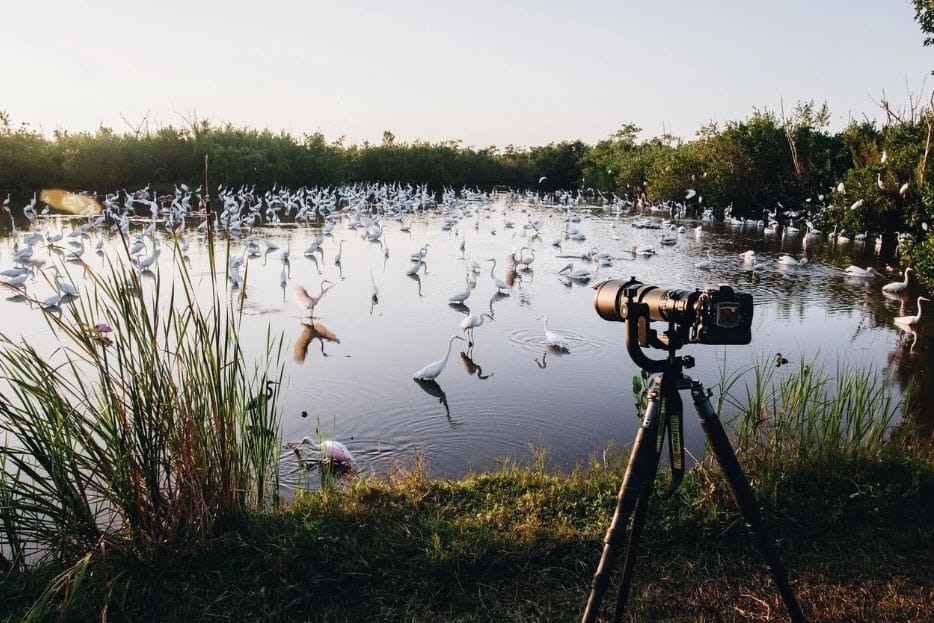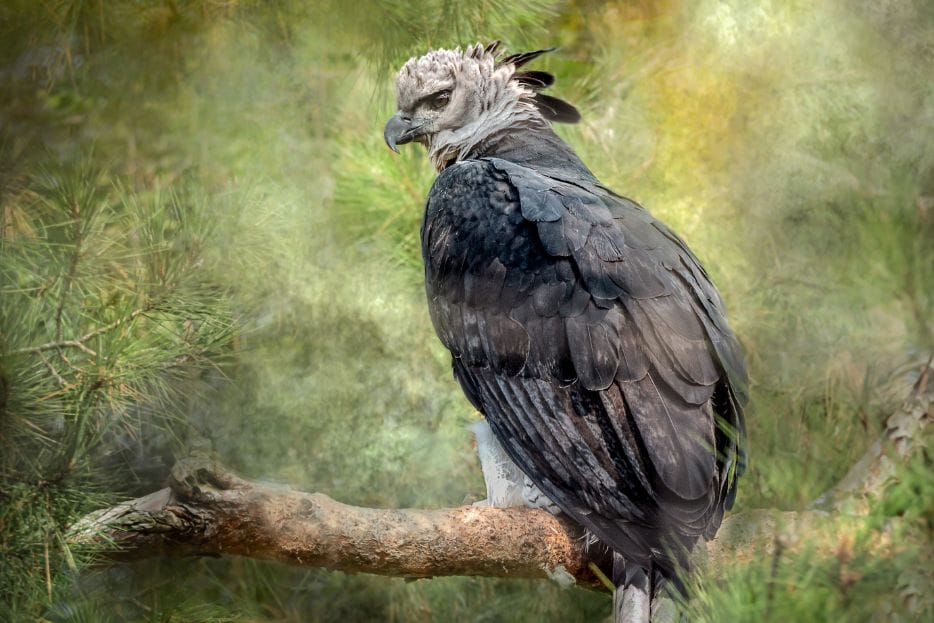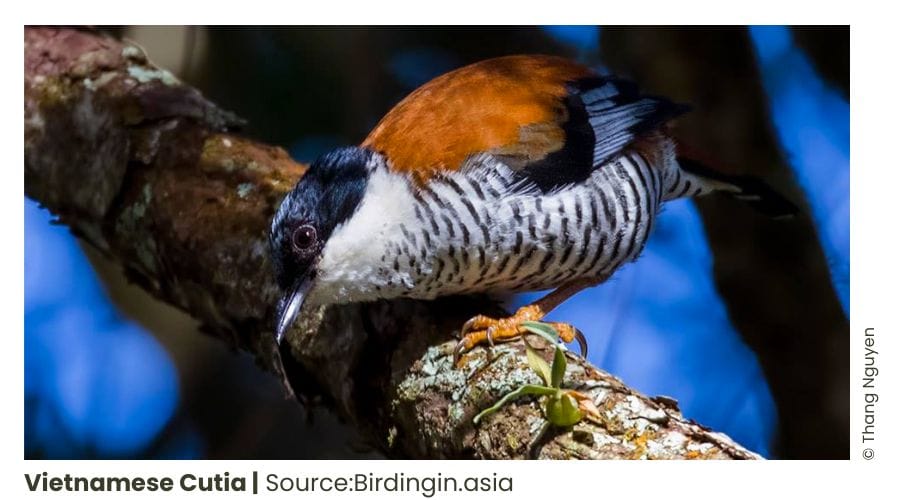This is just announced about tower hides for birdwatching project in Vietnam led by WANEE.VN [update Otc-2022 from official “WANEE VIETNAM”]
FIRST
What’s BirdWatching?
What is bird watching exactly? It is basically an activity wherein birds are observed for the purpose of recreation or citizen science.
This is the most basic bird-watching definition, but aside from simply watching or listening to birds, most birders will go a few steps further by documenting their observations, identifying the birds they see, and sharing their findings with fellow bird enthusiasts.
But regardless of the activities that bird watchers pursue, at its core, birding meaning is inextricably rooted in an appreciation and sense of wonder at the avian species. This is what everyone from novice bird watchers to expert birders has in common.
People outside the community may not see what is special about birds. After all, they’re everywhere right? But bird watchers have a collector’s mindset. But instead of collecting stamps or coins, they collect records of the birds they’ve seen–it could be notes, lists, photographs, or videos.
With birds differing so much in appearance and behavior, it’s hard to run out of things to be excited by. There is always a new species to look for, a new call to hear, or a new behavior to watch.
Bird Watching vs. Birding vs. Twitching
The words above are sure to come up when you do a search on bird watching terms. These may sometimes be used interchangeably, but there are nuanced differences between them.
It can be seen as differences in the level of intensity and resource allocation towards the bird-watching hobby. Here is a layman-friendly breakdown of the terms:
Bird watching
Within the community, the bird watching meaning refers to watching birds from the comfort of one’s own home, or at most, in a nearby local park. Bird watchers invest minimally in the hobby. As such, their knowledge and species list is not as extensive. It may be thought of as the beginner level.

Birding
What is a birder and how is it different from a bird watcher? To define birding, think about people who are dedicated enough to put aside money for birding equipment and trips. Correspondingly, birders tend to be more well-versed in details aside from visual and aural identification, including population distribution, migratory patterns, and other trivia.
Twitching
For a twitcher, bird watching is a worthwhile reason to spend money. They plan long-distance trips just to see a particular bird and tick that off their list–this act is referred to as a twitch or chase. To do this successfully requires intense research on the target, so you can expect twitchers to be extremely knowledgeable.
Bird photography
Birders typically are interested in hearing and seeing birds, getting as good a look as possible, and moving on down the trail to look for the next bird. Bird photographers, by contrast, typically want to capture a definitive photograph of an individual bird as a representative of its species.

How is Birdwatching in the world?
Birdwatching tourism (also known as avi-tourism) is one of the most popular and fast-growing
niche nature-based tourism activities, with an estimated 3.5 million international avi-tourism
trips taken globally in 2017.
Economic Value and Spending – full report here (open new tab on responsibletravel.org/)
The 2011 FWS survey estimates that the annual economic value of U.S. bird watching is $15 billion for trip-related and $26 billion for equipment-related expenditures, generating a total of $41 billion and creating a total industry output (direct, indirect and induced) across the United States of $107 billion.
Bird watching tourism is also increasing in popularity in Europe. As a comparison, in the U.K., birdwatching expenditures are estimated at $500 million per year. Spending by birders varies, of course, depending on whether it is at or near home, within the home country, or internationally.
According to one study, birders and other wildlife-specific specialists “spend more money than generalists.” Another study concludes, “ecotourism including bird-watching can be more lucrative for a community than other types of economic activities.”
The UNEP Green Economy Report shows that global spending on all areas of ecotourism is increasing by about six times the industry-wide rate of growth. Thus, birders, as a market segment, represent an overall higher value to a country’s economy.
Many birders are willing to pay to see particular species, including highly charismatic and emblematic species, for example, Harpy Eagle, Scarlet Macaw, etc. However, few studies have been conducted on the value of a particular species.

In Scotland, the Royal Society for the Protection of Birds found that US $8–12 million is spent annually by tourists wishing to see White-tailed Eagles on the Isle of Mull. Another study found that seeing new species in the US may cost, on average, $75; whereas, for a visit to Costa Rica—a species-rich country but relatively cheap to travel to and within—seeing a new species may cost about $8–10.
How’s Birdwatching in Vietnam?
Bird Watching is a hobby that was born in the early 20th century in England, then spread to other countries in Europe, the Americas, and Australia. This form of tourism has two main levels: only watching birds and watching birds plus other entertainment activities.
In Japan and Thailand, bird-watching tours are held in the form of bird-watching and wildlife photography. Bird watching was originally the job of scientists who conducted a study of nature but now it has been popularized by groups of nature lovers and environment enthusiasts.
In the 1990s, the first groups of international visitors appeared in the jungles of Vietnam to watch the birds. At that time, the jungles were still wild, with diverse biodiversity, but it was difficult to watch the birds because there was no tour guide or necessary services, as well as a shortage of documents about migratory bird species in Vietnam.
Since 2001, many travel companies have offered bird-watching tours. Some firms are specialized in this type of tour, such as the Vietnambirding of American man Richard Craik and the Wild Tour Vietnam, which was established in 2005 and has attracted large numbers of tourists and helped promote the highlights of Vietnam avifauna.

BirdLife International has ranked Vietnam as one of the leading countries in the level of biological diversity and the number of threatened bird species. According to statistics, Vietnam’s avifauna consists of over 870 species, including endemic 12 species (ranking top in Southeast Asia for the number of endemic bird species), nine rare species, and 43 globally endangered species.
What’s are Tower hides designed by WANEE Vietnam
Based on local and expert bird knowledge, WANEE Vietnam are contribute to the local partner who owns hot spots for Birds in over Vietnam to build up places and training for local people to host this space to serve Tourists in Birdwatching, Photographing, and much more on Education for Young generation.
WANEE will build the most comprehensive way to watching not only birds but also wildlife for tourists and bring strange money to local communities.
Why is Tower hides support for Bird conservation in Vietnam
4 mains thing WANEE focus on when build up Tower hides
Make a sustainable income for local people
Protect habitat for birds
High education for Young generates
Easy to reach to General tourist
The potential for the conservation of Vietnam’s birds and ecosystems cannot be overstated. Bird-watching tourism has the potential to generate funds for protected areas (both government and privately managed), engage the public about the value of natural ecosystems, and provide alternative livelihoods to compete with unsustainable extractive industries (Sekercioglu, 2002).
Of course, ecotourism is not always a panacea for conservation and must be implemented responsibly to be sustainable (Krüger, 2005). Yet, bird-watchers are recognized as environmentally and socially responsible tourists, and so bird-watching in Vietnam has every opportunity to be a sustainable form of ecotourism (Steven, Morrison, & Castley, 2015).
Bird-watching tourism offers the chance to make protected lands be economically productive, without compromising national and international conservation commitments. Following guidelines for sustainably run bird-watching tourism activities will be fundamental to the success of this industry in Vietnam.
When are Tower hides official in Vietnam?
In 2022, WANEE Vietnam will lead this project and partner with many operations, NGOs, and Companies to build a network to make it popular in Vietnam and help.
Where is the Tower hides for birdwatching in Vietnam?
Birdwatching ecotourism is a highly-responsible and educative kind of nature tourism that helps conserve the natural environment and cultural values of the local area, develop the community and bring about remarkable economic benefits.
So our Tower hides for birdwatching in Vietnam are seen everywhere but are especially found with many species in nature reserves and national parks.
There are 30 National Parks, 67 Nature Reserves, and more than 50 Bird Sanctuaries in Vietnam, and more than 16 Marine Protected areas are planned to be established by 2015, which has great potential to develop Tower hides base.
In order to develop this tourism model in a nature reserve, it is necessary to improve personnel’s capability and to set up a database for identifying wild birds in each area. Conserving precious and specific bird species, and characteristic communities for habitats plays an important role in attracting tourists to Vietnam for bird watching.
How to donate to this project
WANEE is starting this project recently, and after building up the concept and working with the local partner we’ll call donate or support from communities. If you are interested in our journey, please don’t hesitate to contact us by this email: INFO@wanee.vn.
How to Identify the Greater Sand Plover, Tibetan Sand Plover and Siberian Sand Plover
ContentsFIRSTIdentification Differences within the Sand Plover Complex: The sand plover group, which was traditionally divided [...]
Highlights of Cat Tien National Park Reptiles and Amphibian Endemics
Spanning over 71,350 hectares of tropical forests, grasslands, and wetlands, Cat Tien National Park is [...]
Highlights of Cat Tien National Park Mammals in a World Biosphere Reserve
In addition to reptiles and birds, Cat Tien National Park is also rich in mammals, [...]
Kontum Plateau Endemic and Highlight bird
Kontum Plateau Endemic And Highlight Bird species like Chestnut-eared Laughingthrush and top birding routes while [...]
Dalat Plateau Endemic and highlight bird
The Dalat Plateau is a birdwatcher’s paradise, renowned for its exceptional biodiversity and unique highland [...]
Cat Tien National Park Endemic and Highlighted Birds
Covering 71,920 hectares in southern Vietnam, Cat Tien National Park is home to a number [...]